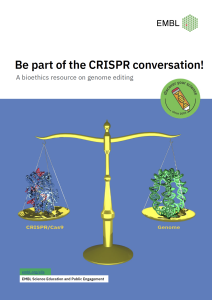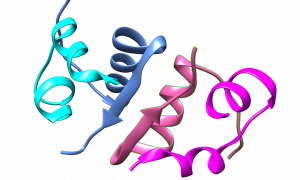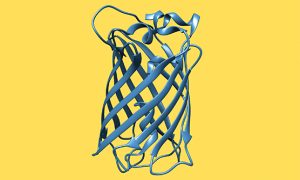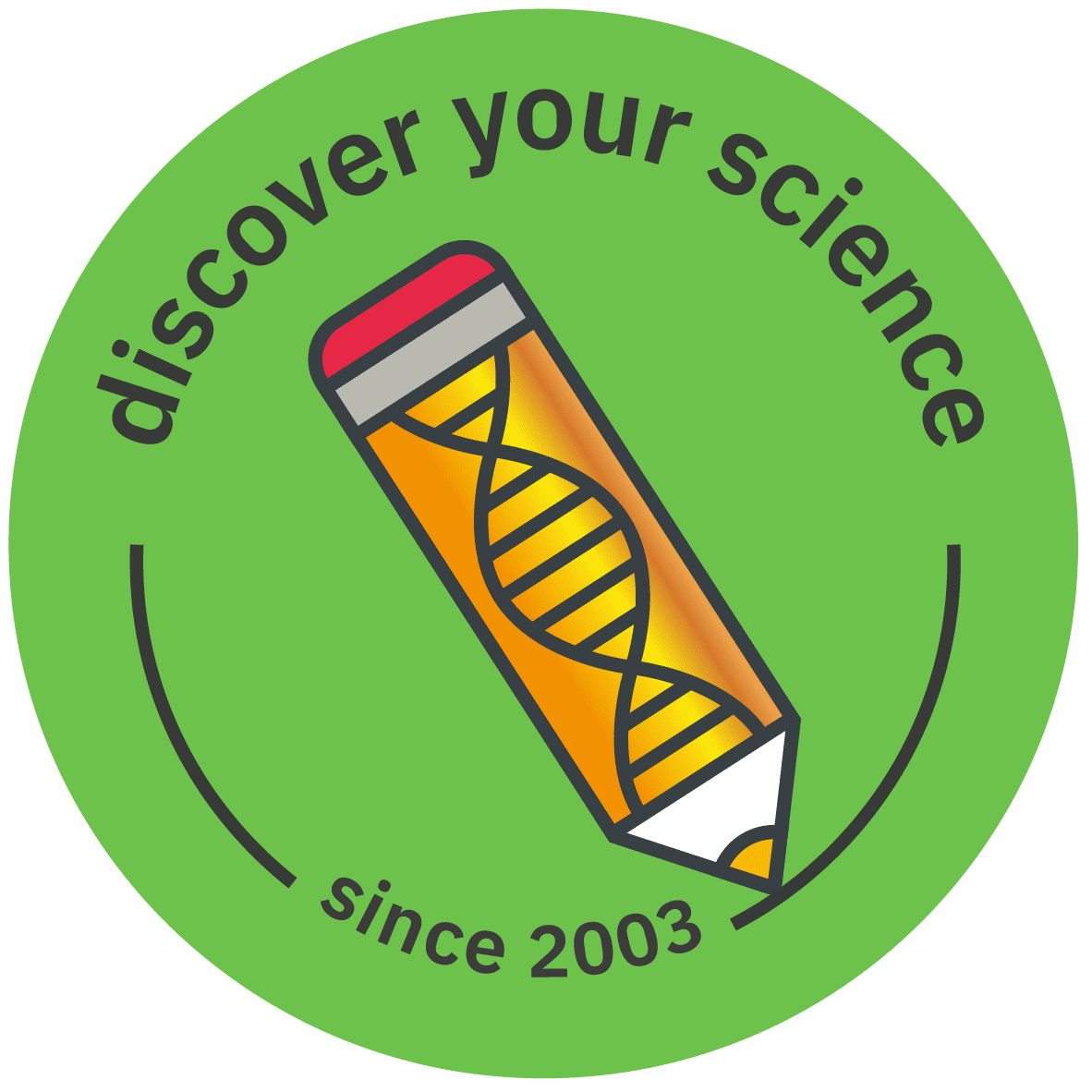
Step 1: Ricerca nel database
Descrizione
Immaginate che i nostri campioni di DNA siano stati mescolati prima del sequenziamento e che non sappiamo chi corrisponde a chi. Per stabilire l’identità delle sequenze e sapere qualcosa sulle loro origini, condurremo una ricerca sul database European Nucleotide Archive (ENA).
Le sequenze che utilizzeremo per la nostra analisi si trovano nella tabulazione “Sequences” qui sotto. Ognuna ha un nome generico, e dopo la ricerca nel database ENA sarete in grado di assegnare le sequenze ai quattro organismi a cui appartengono.
Il tuo compito
Procedere come descritto sotto:
- Aprite la tabulazione “Sequence 1” e copiate l’intera sequenza che inizia con “>Sequence 1”. Potete usare il comando da tastiera Ctrl.+C per copiare la sequenza.
- Seguite le istruzioni nella tabulazione “ENA” per fare la ricerca nel database.
- Annotate quello che avete trovato, provate a rispondere alle domande nella tabulazione “Questions” e ripetete questo procedimento con le altre sequenze.
ENA
- Incollate la sequenza nel campo di ricerca ENA (comando Ctrl.+V).
- Ora, cliccate su “Submit“ in basso e la ricerca avrà inizio. La sequenza che avete inserito sarà paragonata a tutte le sequenze note contenute nel database.
- I risultati della ricerca appariranno dopo pochi secondi. Scorrete la pagina fino alle colonne intestate “ENA” e cercate di scoprire quali sono le specie che corrispondono alla vostra sequenza identificate dalla ricerca. Le sequenze più simili hanno un valore “Identity (%)” di 100 e un “E-Value” di 0.
- Annotate quello che avete trovato, provate a rispondere alle domande nella tabulazione “Questions” e ripetete questo procedimento con le altre sequenze.
Sequenze 1-4
Sequenza 1
>Sequence1_AVGFP
ATGAGTAAAGGAGAAGAACTTTTCACTGGAGTGGTCCCAGTTCTTGTTGAATTAGATGGCGATGTTAATGGGCAAAAATTCTCTGTCAGTGGAGAGGGTGAAGGTGATGCAACATACGGAAAACTTACCCTTAATTTTATTTGCACTACTGGGAAGCTACCTGTTCCATGGCCAACACTTGTCACTACTTTCTCTTATGGTGTTCAATGCTTCTCAAGATACCCAGATCATATGAAACAGCATGACTTTTTCAAGAGTGCCATGCCCGAAGGTTATGTACAGGAAAGAACTATATTTTACAAAGATGACGGGAACTACAAGACACGTGCTGAAGTCAAGTTTGAAGGTGATACCCTTGTTAATAGAATCGAGTTAAAAGGTATTGATTTTAAAGAAGATGGAAACATTCTTGGACACAAAATGGAATACAACTATAACTCACATAATGTATACATCATGGGAGACAAACCAAAGAATGGCATCAAAGTTAACTTCAAAATTAGACACAACATTAAAGATGGAAGCGTTCAATTAGCAGACCATTATCAACAAAATACTCCAATTGGCGATGGCCCTGTCCTTTTACCAGACAACCATTACCTGTCCACACAATCTGCCCTTTCCAAAGATCCCAACGAAAAGAGAGATCACATGATCCTTCTTGAGTTTGTAACAGCTGCTAGGATTACACATGGCATGGATGAACTATACAAA
Sequenza 2
>Sequence2_GFPm
ATGTCTAAAGGTGAAGAATTATTCACTGGTGTTGTCCCAATTTTGGTTGAATTAGATGGTGATGTTAATGGTCACAAATTTTCTGTCTCCGGTGAAGGTGAAGGTGATGCTACTTACGGTAAATTGACCTTAAAATTTATTTGTACTACTGGTAAATTGCCAGTTCCATGGCCAACCTTAGTCACTACTTTCGGTTATGGTGTTCAATGTTTTGCTAGATACCCAGATCATATGAAACAACATGACTTTTTCAAGTCTGCCATGCCAGAAGGTTATGTTCAAGAAAGAACTATTTTTTTCAAAGATGACGGTAACTACAAGACCAGAGCTGAAGTCAAGTTTGAAGGTGATACCTTAGTTAATAGAATCGAATTAAAAGGTATTGATTTTAAAGAAGATGGTAACATTTTAGGTCACAAATTGGAATACAACTATAACTCTCACAATGTTTACATCATGGCTGACAAACAAAAGAATGGTATCAAAGTTAACTTCAAAATTAGACACAACATTGAAGATGGTTCTGTTCAATTAGCTGACCATTATCAACAAAATACTCCAATTGGTGATGGTCCAGTCTTGTTACCAGACAACCATTACTTATCCACTCAATCTGCCTTATCCAAAGATCCAAACGAAAAGAGAGACCACATGGTCTTGTTAGAATTTGTTACTGCTGCTGGTATTACCCATGGTATGGATGAATTGTACAAATAACTGCAG
Sequenza 3
>Sequence3_YFP
AATATTTTTATTAATTCATTAGAAAAATGAGAGGAAGGATTATTATGTTTAAAGGTATAGTAGAAGGTATAGGAATCATTGAAAAAATTGATATATATACTGACCTAGATAAGTATGCAATTCGATTTCCTGAAAATATGTTGAATGGAATTAAAAAGGAGTCGTCAATAATGTTTAACGGATGCTTCTTAACGGTAACTAGCGTGAATTCAAACATTGTCTGGTTTGATATATTTGAAAAAGAAGCACGTAAGCTTGATACTTTTCGGGAATATAAGGTAGGTGACCGAGTAAATTTAGGAACATTCCCAAAATTTGGCGCTGCATCTGGTGGGCATATATTATCAGCAAGGATTTCATGTGTAGCAAGTATTATTGAAATAATAGAAAATGAGGATTATCAACAAATGTGGATTCAAATTCCTGAAAATTTTACAGAGTTTCTTATTGATAAAGACTATATTGCTGTGGATGGTATTAGCTTAACTATTGACACTATAAAAAACAACCAATTTTTCATTAGTTTACCCTTAAAAATAGCACAAAATACAAATATGAAATGGCGAAAAAAAGGTGATAAGGTAAATGTTGAGTTATCAAACAAAATTAATGCTAACCAGTGTTGGTAATTTACTGAGGATAGTAAAAATGAACTGTTTAAAATAATATTTAAATTTTTATTTATAATACAGAGTCAGTTGTTGTAAATAGTCTGAGTGGTAAATAAGTTCTACCATTAATTAAATATTATCCATATTAAATAAAGGATCT
Sequenza 4
>Sequence4_RFP
AGTTTCAGCCAGTGACAGGGTGAGCTGCCAGGTATTCTAACAAGATGAGTTGTTCCAAGAATGTGATCAAGGAGTTCATGAGGTTCAAGGTTCGTATGGAAGGAACGGTCAATGGGCACGAGTTTGAAATAAAAGGCGAAGGTGAAGGGAGGCCTTACGAAGGTCACTGTTCCGTAAAGCTTATGGTAACCAAGGGTGGACCTTTGCCATTTGCTTTTGATATTTTGTCACCACAATTTCAGTATGGAAGCAAGGTATATGTCAAACACCCTGCCGACATACCAGACTATAAAAAGCTGTCATTTCCTGAGGGATTTAAATGGGAAAGGGTCATGAACTTTGAAGACGGTGGCGTGGTTACTGTATCCCAAGATTCCAGTTTGAAAGACGGCTGTTTCATCTACGAGGTCAAGTTCATTGGGGTGAACTTTCCTTCTGATGGACCTGTTATGCAGAGGAGGACACGGGGCTGGGAAGCCAGCTCTGAGCGTTTGTATCCTCGTGATGGGGTGCTGAAAGGAGACATCCATATGGCTCTGAGGCTGGAAGGAGGCGGCCATTACCTCGTTGAATTCAAAAGTATTTACATGGTAAAGAAGCCTTCAGTGCAGTTGCCAGGCTACTATTATGTTGACTCCAAACTGGATATGACGAGCCACAACGAAGATTACACAGTCGTTGAGCAGTATGAAAAAACCCAGGGACGCCACCATCCGTTCATTAAGCCTCTGCAGTGAACTCGGCTCAGTCATGGATTAGCGGTAATGGCCACAAAAGGCACGATGATCGTTTTTTAGGAATGCAGCCAAAAATTGAAGGTTATGACAGTAGAAATACAAGCAACAGGCTTTGCTTATTAAACATGTAATTGAAAAC
Domande
- A quali specie corrispondono le sequenze 1, 2, 3 e 4?
- Osservando “Alignments” troverete un confronto 1:1 delle due sequenze. Questo è chiamato un “pairwise alignment”. Per vedere gli allineamenti, potete cliccare sulla descrizione del singolo risultato della ricerca o cliccare su “Show all alignments” in basso nei risultati ENA.
- Come sono rappresentati i nucleotidi che si corrispondono nelle due sequenze?
- Confrontate la vostra sequenza iniziale con la sequenza del database. Ci sono differenze tra la vostra sequenza (query) e la sequenza archiviata nel database (subject)?
- Ci sono differenze a livello di singoli nucleotidi tra le due sequenze? Quale potrebbe essere il motivo?
Liste attivita

Share:
 English
English Čeština
Čeština Français
Français Ελληνικά
Ελληνικά Svenska
Svenska


